Bongsudae Beach (봉수대해변)
13.1 Km 13488 2022-08-04
Oho-ri, Goseong-gun, Gangwon-do
+82-33-680-3356
Bongsudae Beach is located 200 meters north of Sampo Beach and the white-sand coastline stretches along the side of National Road No. 7. This beach was opened in 1997, and remains relatively cleaner than other beaches. The beach is used as an auto-camping site in summer. The beach shore is only 800 meters long and 50 meters wide, but boasts clean and fine sand.
Postponed: Yongdaeri Hwangtae Festival (용대리 황태축제)
13.1 Km 17883 2022-05-16
Yongdae 3-ri Intersection, Inje-gun, Gangwon-do
• 1330 Travel Hotline: +82-2-1330 (Korean, English, Japanese, Chinese) • For more info: +82-33-462-4805
Yongdaeri Hwangtae Festival aims to promote the city as the best place for hwangtae (pollack) and to inform people about the quality and nutritional value of pollack in order to boost the region's economy. An array of hands-on pollack-themed programs are available for visitors to take part in.
Baekdamsa Temple (백담사)
13.3 Km 26525 2021-05-03
746, Baekdam-ro, Inje-gun, Gangwon-do
+82-33-462-6969
Located within Seoraksan Mountain, Baekdamsa Temple was built by Monk Ja Jang (590~658) during the reign of Queen Jindeok (647-654), 28th ruler of the Silla Kingdom. The temple was burnt down and moved several times until 1957 when it was rebuilt to the current location. There are various treasures and hermitages in the temple. Many famous people have visited the temple including Manhae Han Yong-un, a strong independence activist and poet. There are countless number of rock towers in front of the temple by the creek where visitors come to stack stones while praying for their wishes.
Naksansa Temple (낙산사)
13.4 Km 61805 2022-12-22
100, Naksansa-ro, Yangyang-gun, Gangwon-do
+82-33-672-2447
This ancient temple was built in the 11th year of King Munmu’s reign of Silla (671) by the Buddhist monk Uisang. Naksansa Temple is one of the foremost sights of Yangyang, and one of the most historic sites in the region. Along with Ganghwa’s Bomunsa Temple and Namhae’s Boriam Hermitage, it is said to be one of the three centers of the cult of Avalokitesvara in Korea. Its handsome view overlooking the East Sea has earned it a spot in the Eight Sights of Gwandong (eight famous sights in Yeongdong region of Gangwon-do), documented throughout the ages in many classic literature and poetry. Today’s Naksansa Temple is a product of many restorations and expansions, and has many examples of cultural heritage within its walls. There is a 16 meter-tall statue of the Avalokitesvara Bodhisattva to Uisangdae, a pavilion built to overlook the sunrise over the East Sea on a coastal cliff, Hongnyeonam Hermitage, built over the crashing waves, Seven-story Stone Pagoda of Naksansa Temple, Yangyang (Treasure No. 499), a Joseon-era pagoda with Goryeo-era style, and Stupa, Stele, and Reliquaries of Naksansa Temple, Yangyang (Treasure No. 1723), including a number of sarira. A mountain fire in 2005 resulted in the loss of 20 buildings, including the building that housed its bronze bell (formerly Treasure No. 479 of Korea). The temple also operates templestay programs available through its website.
Uisangdae Pavilion (낙산사 의상대)
13.6 Km 16142 2021-04-12
100, Naksansa-ro, Yangyang-gun, Gangwon-do
+82-33-672-2447
This pavilion is located on a seaside cliff on the way from Yangyang’s Naksansa Temple to Gwaneumgul Cave of Hongnyeonam Hermitage. The word “dae” in Uisangdae refers to a building built at a vantage point for areas with beautiful scenery. Indeed, the view of the East Sea and the coast from Uisangdae Pavilion awarded its recognition as one of the Eight Sights of Yangyang, and a must-visit place for all visitors to Naksansa Temple. Jeong Cheol (pen-name: Songgang), a famed scholar and writer of the poem Song of Diamond Mountains, chose the pavilion as one of the Eight Sights of Gwandong, and the pavilion is today one of the popular sites for sunrise-viewing on the east coast of Korea. Together with Hongnyeonam Hermitage, it is designated as the Scenic Site No. 27 of Korea under the name “Uisangdae Pavilion and Hongnyeonam Hermitage of Naksansa Temple, Yangyang.” Uisangdae is named after Uisang, a respected Silla-era Buddhist monk who is said to have founded this temple in 671 (11th year of King Munmu’s reign of Silla), and many stories of his deeds can still be found in the temple. For instance, Uisangdae is said to be the site where he meditated before founding Naksansa Temple at its present site. Today’s pavilion was restored to its present hexagonal form in 1995.
Jeongin Hoesikdang (정인회식당)
13.9 Km 18009 2024-02-16
32 Naksansa-ro, Ganghyeon-myeon, Yangyang-gun, Gangwon-do
Jeongin Hoesikdang, situated near Naksan Beach in Yangyang, specializes in mul hoe (cold raw fish soup) and saengseon jjigae (fish jjigae). It prides itself on using fresh fish, sourced from nearby ports and used within a day of purchase. The restaurant's signature dish is sanureok maeuntang (spicy rockfish stew). Other popular menu items include modeum mul hoe (assorted cold raw fish soup), seongge albap (sea urchin roe rice), and ojingeo hoe deopbap (raw squid bibimbap). Additionally, soups like gomchi tang (spicy moray eel stew) and haemul tang (spicy seafood stew) are also highly recommended. For guests interested in local attractions, the scenic Naksansa Temple and Naksanhaebyeon Beach are nearby.
Geumgangsan Daegehoetjip (금강산대게횟집)
14.0 Km 169 2021-03-20
8-5, Haemaji-gil, Yangyang-gun, Gangwon-do
+82-33-671-5207
A restaurant that sells a variety of seafood. The best menu at this restaurant is king crab. This seafood restaurant is located in Yangyang-gun, Gangwon-do.
Songjiho Beach (송지호 해수욕장)
14.0 Km 58650 2024-03-18
85 Simcheungsu-gil, Jugwang-myeon, Goseong-gun, Gangwon-do
Located near Songjiho Lake, one of the most famous lagoons on the eastern coast of Korea, Songjiho Beach stretches 2 kilometers in length and is 100 meters wide. It is also located close to Seoraksan Mountain. The beach is quite popular, thanks to its clear water and shallow depth. The island just off the coast, Jukdo Island, features a handsome collection of bamboo trees and unique rock formations.
Inje Hwangtae Village (인제 황태마을)
14.1 Km 24124 2024-03-15
307 Jinburyeong-ro, Buk-myeon, Inje-gun, Gangwon-do
+82-33-462-4805
Inje’s winter landscape is at its most picturesque at the Dried Pollack Deokjang, the area’s premier seasonal attraction, within Inje Hwangtae Village. Deokjang refers to the traditional racks used for air-drying fish. Here, pollack undergoes a natural freeze-drying process, alternating between the sharp cold and the mild winter sunlight, resulting in a chewy texture that is much loved. This process, coupled with the breathtaking view of the racks laden with fish against the snowy backdrop, is indeed one of winter’s unique offerings. As visitors explore the Deokjang, they can learn about the 33 meticulous steps that transform pollack from fresh catch to the dried delicacy that graces dining tables. Adjacent to the Deokjang, Maebawi is known for its "iron way," a rock climbing path ideal for beginners. However, in winter, it transforms into a challenging ice climbing site suited for experienced climbers.
Baekdamgyegok Valley (백담계곡)
14.1 Km 15757 2021-06-25
150, Baekdam-ro, Inje-gun, Gangwon-do
+82-33-801-0977
Baekdamgyegok Valley stretches over an eight kilometer section from Baekdamsa Temple to Yongdae-ri in Inje-gun. The valley has a road, but it is closed to general traffic. The valley is located within Seoraksan National Park. The stream running through the valley is wide and deep. The name of the valley comes from the claim that there are one hundred ('baek' in Korea) pools ('dam') of water along the valley. Baekdamgyegok Valley features clean water and lush forests.
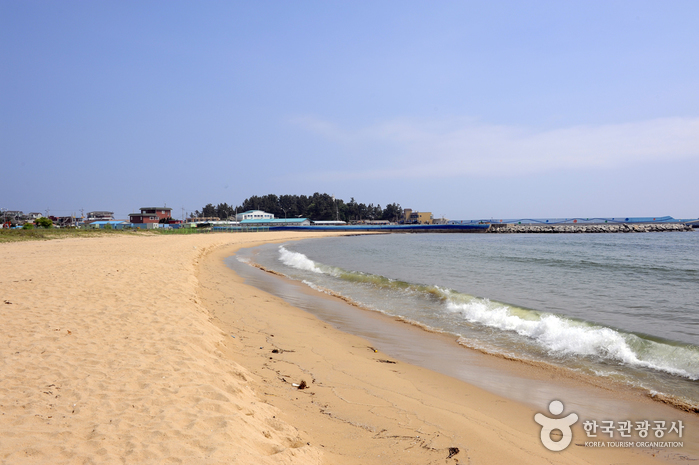
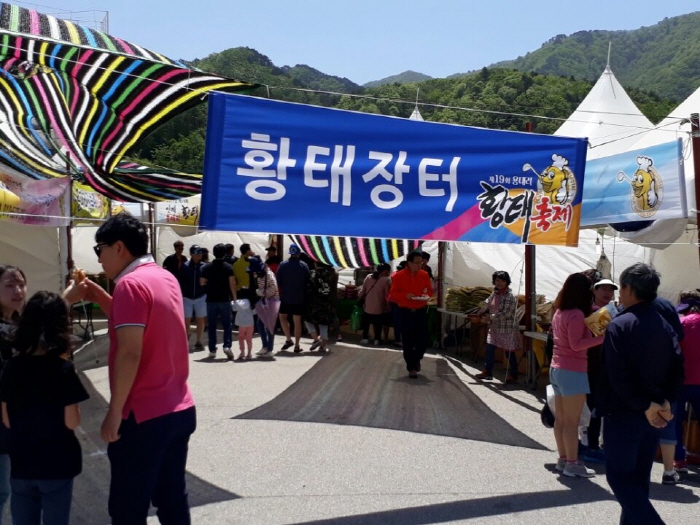
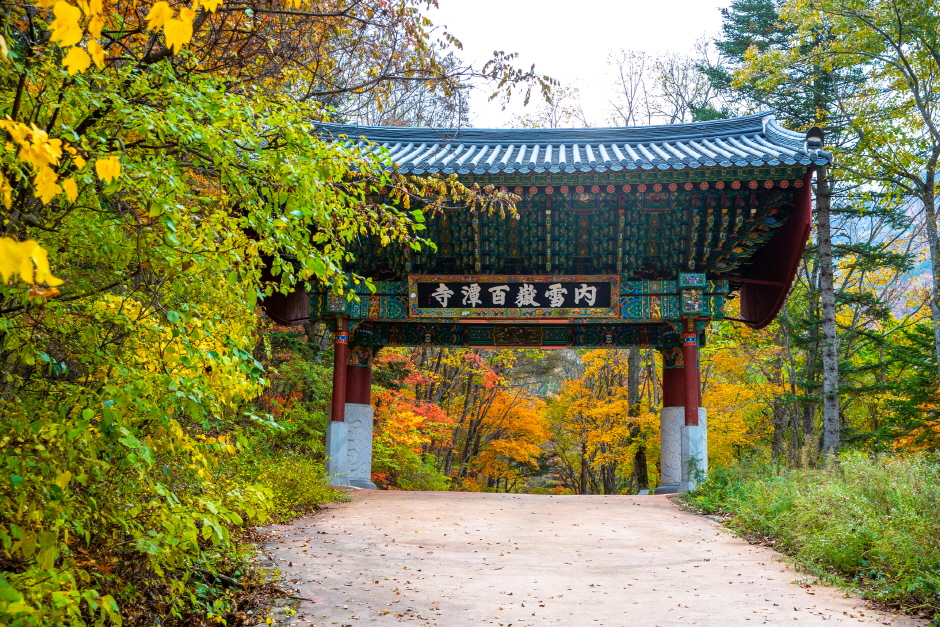

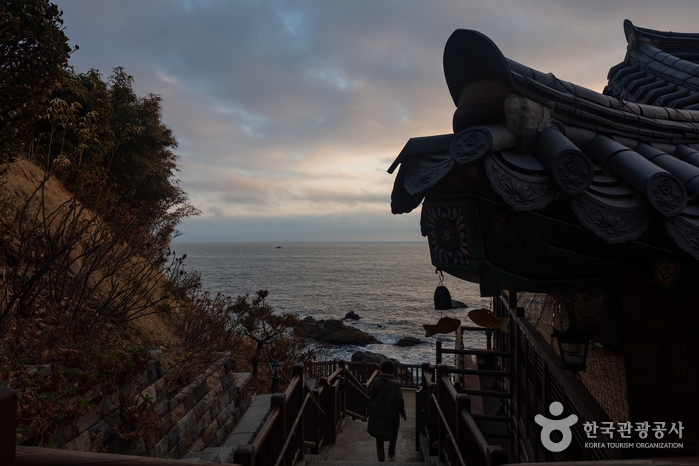
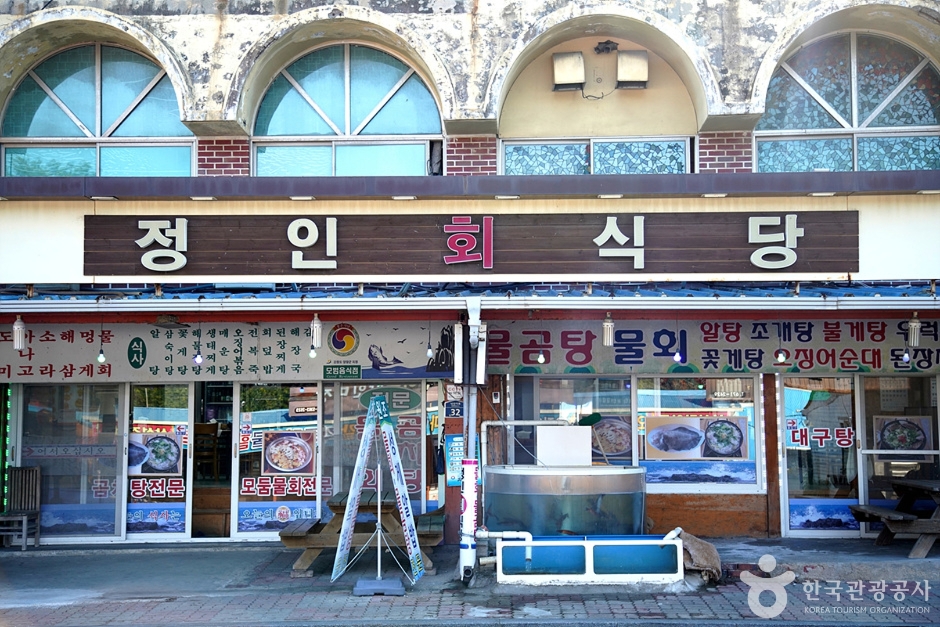
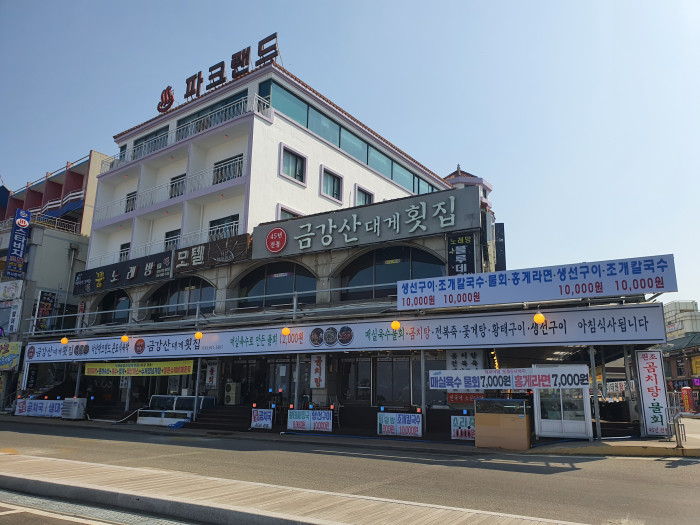
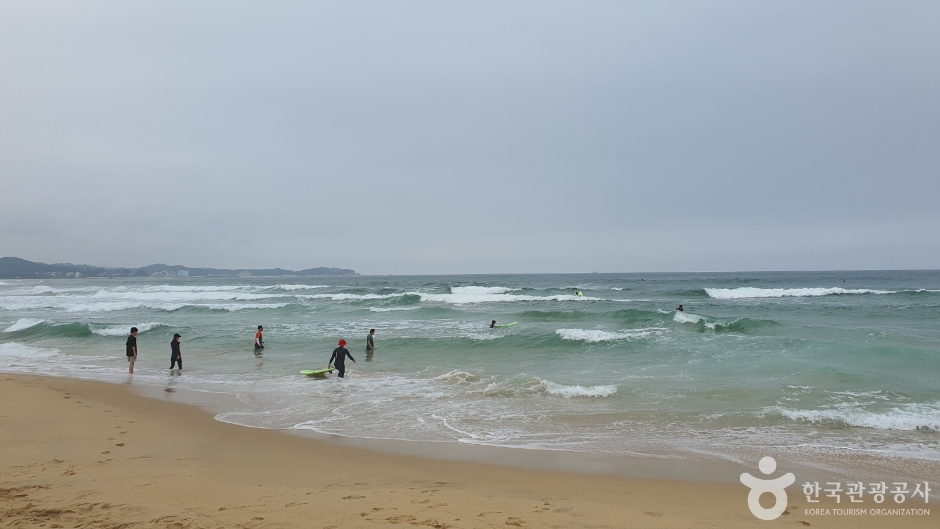
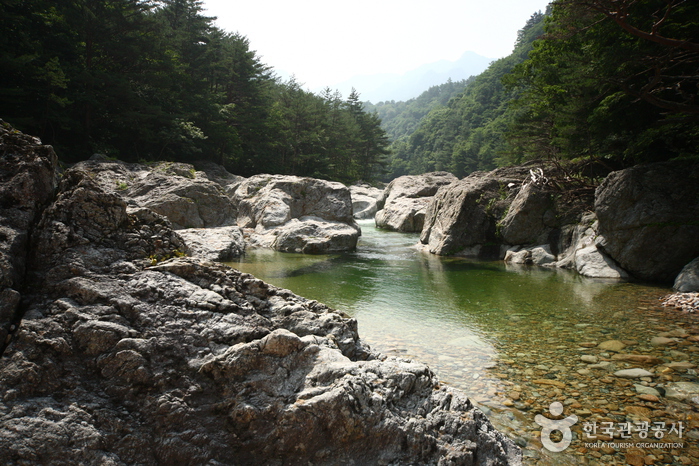
 English
English
 한국어
한국어 日本語
日本語 中文(简体)
中文(简体) Deutsch
Deutsch Français
Français Español
Español Русский
Русский